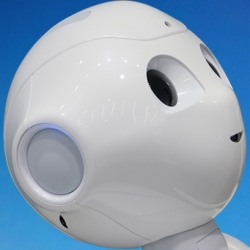
Until now, industrial has been the dominant sector for robots, particularly in the car industry and consumer electronics. In fact, the industrial robotics market is worth more than $32 billion dollars. Meanwhile, the service robotics sector has, to date, seen a huge gap between research and commercialization.
We’ve seen very few successful personal or service robotics companies, in spite of the pressure of labor shortages and an aging population. However, the service robotics industry is now growing strongly and encompasses all of the new market areas not defined as industrial robotics. It is hard to accurately predict growth here when there is such potential for rapid growth as costs drop, new systems are introduced, and new suppliers start to proliferate.
The International Federation of Robotics has tracked overall annual growth at around 11.5 percent so far and projects more than 20 percent annual growth to come. But some niche areas have already demonstrated growth of between 150 percent (mobile platforms) and 650 percent (assistive technology) in the last year. The primary market areas for service robots so far have been in defense, field (agriculture and inspection), logistics, and health/medical applications.
One of the new categories to emerge in the last year is the humanoid helper, kiosk robot or retail robot. Hot on the heels of this professional service robot category has come a wave of affordable social personal robots, like Jibo, Pepper, Buddy, and Mabu.
The early 21st century saw the first wave of companionable social robots. They were small cute pets like AIBO, Pleo, and Paro. But the novelty of robot toys and pets wore off and for the last 10 years the consumer robotics market has been dominated by utilitarian drones and vacuum cleaners.
But the second wave of social robots has started, driven by the development and spread of smart phone technology and more sophisticated user interfaces. A key factor in a robot’s ability to be social is its ability to correctly understand and respond to people’s speech and to guess at the underlying context or emotion.
Improvements in cloud robotics, computer vision, and AI speed up the likelihood that we will all soon be in daily interaction or conversation with robots. These robots might be our vehicles, our houses, or more anthropomorphic robot friends.
We are starting to see market pull matching technology push in robotics. New market opportunities are arising, partly due to continual improvements in the safety and compliance of robot systems, alongside their simpler more intuitive user interfaces. And the cost of service robotics systems is dropping significantly, putting service robots in reach of many new market partners.
